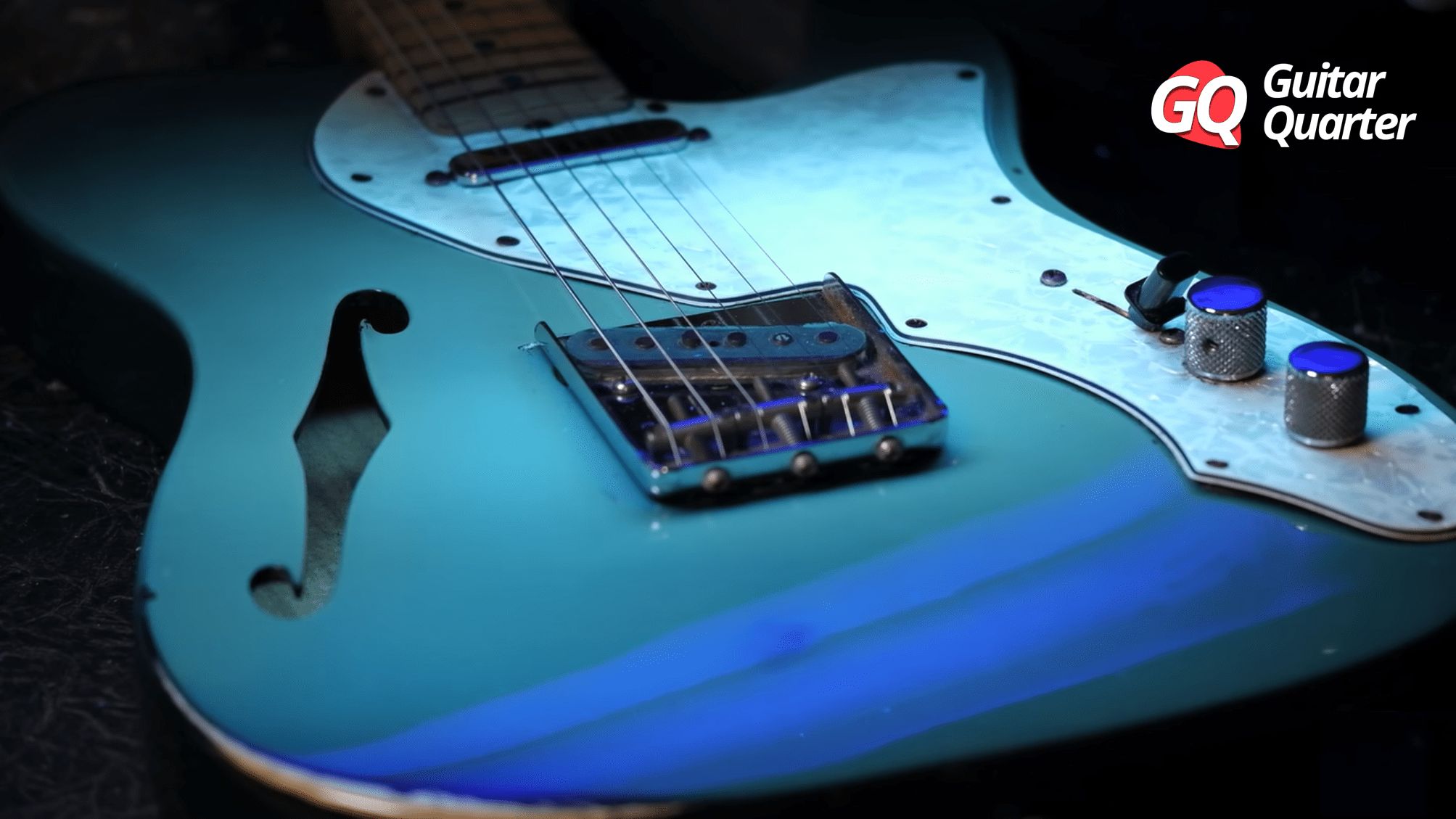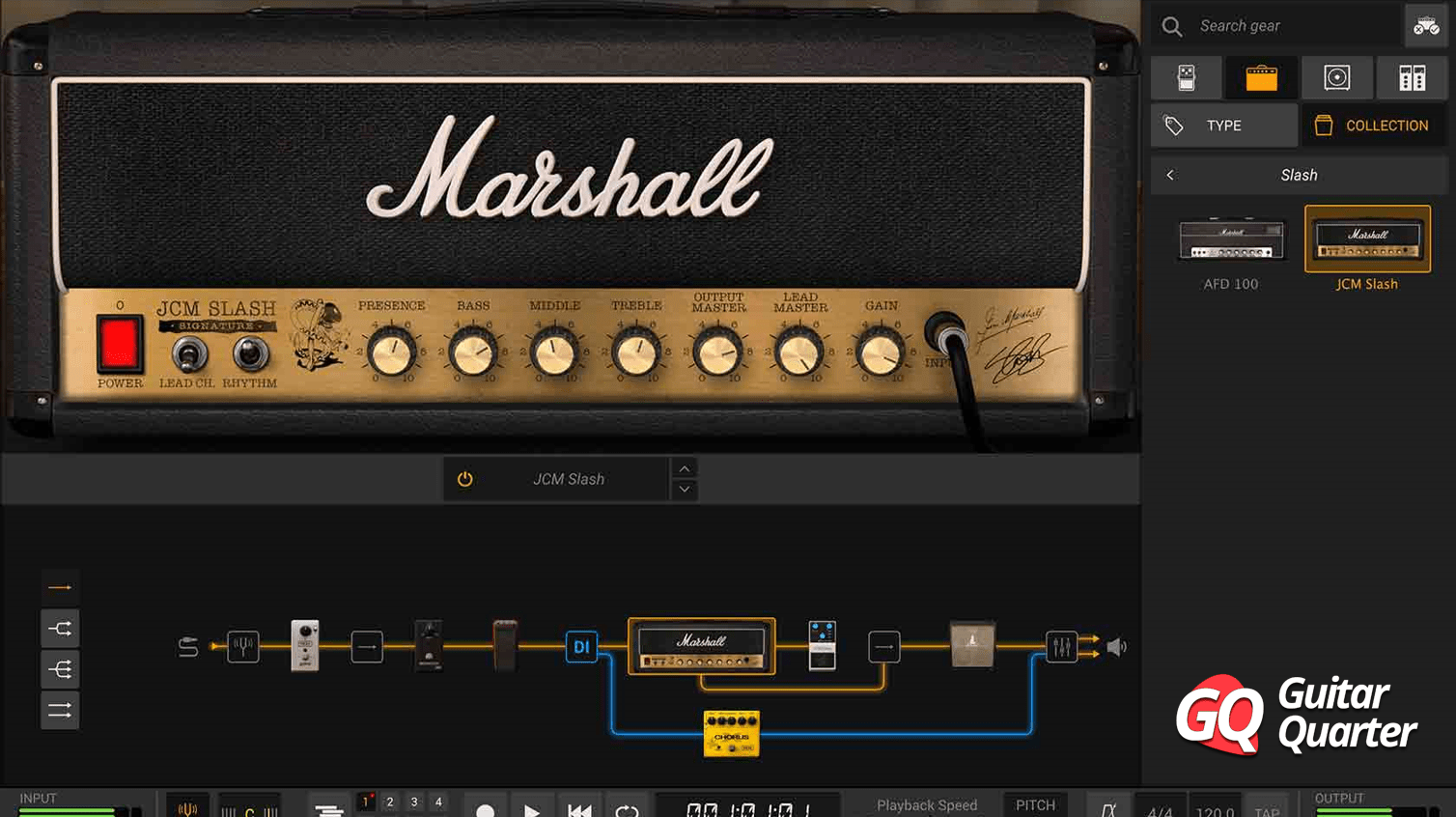Black Light: How to Examine Vintage Guitars with UV Light?

The black light or UV light is used to check the condition of vintage guitars and examine if they have breaks, repairs or modifications.
Table of Contents
Black light or UV light and vintage guitars
The black light or UV light is a lamp which emits radiation ultraviolet. The ultraviolet color is a color that is not visible to the human eye, it is below violet. Ultraviolet radiation becomes visible due to the phenomenon called fluorescence when illuminating certain materials. The light used to inspect guitars is long-wave ultraviolet, called ultraviolet A -UVA- radiation.
Thus, the black light is a great tool used by collectors of vintage instruments to examine the condition of vintage guitars. This is because UV light makes old nitro lacquers glow a fluorescent green or yellow. In this way, the black light allows you to detect fixes and modifications such as repairs on Gibson Les Paul guitar necks or tuners, if the nitro lacquer finish or the 50’s Fender decal is the original. It also allows you to check if the components are original or if some parts have been changed.

How to examine a vintage guitar using ultraviolet light?
To check a guitar or any vintage instrument using black light, you must be in a dark room. Taking the black light and passing it through the guitar, illuminating the finish of it, you will be able to detect if it has repairs or modifications.
The nitrocellulose lacquer used in vintage instruments glows green when you pass a black light through it due to aging of the finish. This is also the case with some accessories. On the other hand, if the guitar was painted and has a refinish even though it has a very realistic relic, it will be detectable. The same if there was a repair or repainting in a particular place, these will have a different tone from the rest. Where instrument or relic wear has exposed the wood, this looks black under black light.

What is black light for with vintage instruments?
The black light helps to identify if the lacquer or accessories of a vintage guitar are very old or not. Although the tone is the same to the naked eye, if there is a specific repair, the black light will show it. Thus, if a guitar was unpainted and repainted many years ago, the black light will not detect it. In that case, only the trained eye of a vintage instrument collector can identify it, if the correct colors, shades, and nitrocellulose lacquer were not used.
Other tips and advice on how to spot old refinishes on a vintage guitar
When a refinish is old, it is not easily detected by black light. However, there are other ways to detect a vintage guitar repaint. The secret is to see the cavities, in the cavities it usually happens that the old finish is not completely removed. Another way is to detect if it was disassembled and reassembled, for this the welds are checked.
Limitations of the use of black light when inspecting vintage guitars
Hundreds of types of paint were used over the years. Some light up like a Christmas tree, others not so much. Contrary to popular belief, lighting less under a black light does not mean that a guitar is “younger.” Maybe your guitar has a different type of paint that doesn’t glow as much under a black light.
Also, there are many counterfeiters who can even fool a black light. By simply putting paint in the sun for a while or leaving a guitar under a tanning bed, it will glow in black light. As a result, fully repainted guitars can glow greenish or yellow under UV radiation, just like any other vintage guitar. Thus, examining vintage guitars is a bit more demanding than simply putting them under a black light and seeing if it glows fluorescently. We recommend you read this guide of what you might check to l buy a vintage guitar.
As you can see, black or ultraviolet A -UVA- light can be an excellent tool for examining vintage guitars. However, you can also be grossly wrong if you don’t have extensive knowledge of classical guitars. Therefore, it is advisable to use it, more than anything, to detect errors, repairs, modifications and problems in guitars; but not so much to identify its age or if the finish is the original. As we have already seen, there are different old lacquers that do not glow in black light. Also, there are techniques that have been used for years to make a new finish shine with ultraviolet light.
Let us know in the comments if you have a black light or have used UV light to examine a guitar.
Related Notes: Gibson Les Paul’s Golden and Darkest Ages: The Best and Worst Years.






